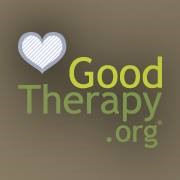Pornography
 Pornography, visual material that depicts naked people and/or sexual acts, can be defined in different ways, but it is generally agreed that pornography is designed to cause sexual excitement. Although it is widely available, it remains controversial: many people consider it inappropriate and obscene, and some believe it to be addictive or otherwise harmful.
Pornography, visual material that depicts naked people and/or sexual acts, can be defined in different ways, but it is generally agreed that pornography is designed to cause sexual excitement. Although it is widely available, it remains controversial: many people consider it inappropriate and obscene, and some believe it to be addictive or otherwise harmful.
What Is Pornography?
Despite its prevalence, pornography has proven to be difficult to define, as there is a general lack of agreement over exactly what constitutes pornography, and the definition is largely influenced by the time and context. For example, a picture of a naked individual in a magazine such as National Geographic would typically not be considered pornographic, because it is not designed to elicit sexual arousal (regardless of the fact that someone may become aroused when looking at the photo). A photo featuring an individual in the same stages of undress will likely be considered pornography, however, when it is displayed in the pages of an adult magazine that is intended to elicit arousal.
Cultural and moral values also play a role in the definition of pornography. In the 1964 Supreme Court case Jacobellis v. Ohio, Justice Potter Stewart famously categorized what should or should not be considered pornographic with his statement, “I know it when I see it.” His words highlighted the fact that the definition of pornography is not always clear.
Some people draw a distinction between pornography and erotica, with pornography typically considered to be more violent, immoral, or representative of unequal power in sexual relations. Representations of sexual behavior have existed for many centuries and in many cultures; it is the definition—and function—of pornography that has changed over time.
Why Do People Use Pornography?
People typically use pornography as a way to experience sexual excitement and gratification. It can be a way for individuals to experience sexual pleasure and satisfaction free from the responsibilities of a partner or committed relationship or to fantasize about acts they might not wish to engage in with a partner. Many couples may view pornography together (or separately, with the other’s knowledge) as a way to enhance their sexual relationship.
Research shows that pornography is used more often and more frequently by men, though that is not to say women do not also use it—several international studies show porn consumption rates in women may be anywhere between 30 and 86% and between 50 and 99% in men.
The availability of pornography has increased exponentially due to the popularity of the internet and wireless devices. In 1997, there were approximately 900 pornographic sites on the internet. Today, there are more than 2.5 million porn sites, and some research suggests that the use of pornography among heterosexual couples may be increasing due to the ease of availability.
Can Pornography Have Harmful Effects?
Pornography is consumed widely by individuals throughout the world, but many consider it obscene, addictive, or otherwise problematic. Opponents of pornography argue it contributes to sexual violence, oppression of women, and relationship problems. Further, because the images and acts displayed in pornography are sometimes unrealistic, viewing such material may leave an individual feeling disappointed by actual sexual encounters.
With regard to relationships, research has shown that pornography can in fact be associated with both negative and positive outcomes. One study, for example, found male use of porn in a heterosexual partnership to be associated with decreased sexual satisfaction in both partners, while female use of porn was associated with improved female sexual satisfaction. It should be noted, however, that though there has been a proven correlation between one partner’s frequent use of porn and decreased intimacy within the relationship, it has not been determined whether pornography is more likely to be the cause or the result of relationship dissatisfaction. Some experts say it may be both.
Excessive use of pornography by one partner has also been linked to decreased self-esteem in the other partner. Pornography may become especially problematic between partners when the use of it is secretive and/or leads to dishonesty and trust issues.
Research has shown that use of pornography is not always harmful and that it can, in fact, have some beneficial effects. Partners in couples who use pornography together have reported a relationship climate that is high in eroticism, in which they experience increased comfort expressing and acting on their sexual desires.
One major argument against pornography is that it perpetuates the objectification and exploitation of women. Some pornography depicts women being dominated or degraded by men or as victims of violent sexual acts. When the subjects of these pornographic images are not participating consensually, such as when victims of sex trafficking are forced or coerced to pose or perform, this becomes a serious and valid cause for concern, and many groups are working to help these individuals and end the production of pornography that is not made with full consent of all parties involved.
Another concern often raised about the use of pornography is the potential for excessive use. Although pornography addiction is not included as a mental health concern in the latest Diagnostic and Statistical Manual of Mental Disorders (DSM-5), there is anecdotal evidence of people using pornography in a way that interferes with their lives. Evidence supports the idea that the use of pornography can, for some individuals, become compulsive: a survey conducted by the Kinsey Institute reported that about 9% of pornography viewers want to stop using porn but are unsuccessful in their attempts to do so. Existing research on brain responses shows that this difficulty controlling one’s use of porn is more similar to a compulsion than an addiction, however.
Pornography as Sex Education
Some individuals, particularly young adults, may seek out pornography—and other erotic publications that may or may not be considered pornographic—in order to learn more about sex. The Kama Sutra, an ancient text with sexual illustrations, was in part used in this way, though sexual education was not its only purpose.
The lack of comprehensive sex education in the schools of some countries has long been a concern. Even when comprehensive sex education is provided, it can be largely heteronormative and may exclude LGBTQ+ individuals. Some parents who are aware of this lack choose to have frank discussions with their children or provide them with books on the subject. Others may talk to their children about sex but focus solely on reproduction and leave certain details out. Still others may avoid the discussion altogether, due to embarrassment or because they feel the child is not yet ready. As a result, teens and young adults who receive little to no information about sexual behavior and activity may increasingly turn to pornography to learn about sex. Sixty percent of college students surveyed in one British study reported using pornography as a form of sex education. While it can be empowering for young people to have access to information about sex, learning about sex from pornography, heterosexual pornography in particular, may lead to unrealistic expectations and problematic standards—though out of the students in the aforementioned study, almost 3/4 reported an awareness of the more unrealistic aspects of porn.
How Can Pornography Be Beneficial?
Research has shown that use of pornography is not always harmful and that it can, in fact, have some beneficial effects. Partners in couples who use pornography together have reported a relationship climate that is high in eroticism, in which they experience increased comfort expressing and acting on their sexual desires. Proponents of pornography believe it often has the effect of enhancing sex lives and providing a safe outlet for sexual expression, whether couples view it together or view it individually but maintain communication about its use.
While some point to pornography as one factor in sexual violence, some research shows it is in fact correlated with a decrease in sexual assault. After pornography was legalized in Denmark, researchers saw a decline in sexual aggression. Evidence also suggests that portrayals of women in heterosexual pornography are changing, with the power relationships shown becoming more equal in nature.
References:
- Adams, R. (2015). Porn objectifies both men and women—just differently. The Huffington Post. Retrieved from http://www.huffingtonpost.com/2015/03/13/porn-women-study_n_6831402.html
- Hamalian, E. (2014, November 19). How pornography fuels exploitation. The Huffington Post. Retrieved from http://www.huffingtonpost.com/ellie-hamalian/how-pornography-fuels-exp_b_6187936.html
- Janssen, E. (2014). Why people use porn. Retrieved from http://www.pbs.org/wgbh/pages/frontline/shows/porn/special/why.html
- Lattman, P. (2007, September 27). The origins of Justice Stewart’s “I know it when I see it.” The Wall Street Journal. Retrieved from http://blogs.wsj.com/law/2007/09/27/the-origins-of-justice-stewarts-i-know-it-when-i-see-it
- Newstrom, N., & Harris, S. (2016). Pornography and couples: What does the research tell us? Contemporary Family Therapy: An International Journal, 38(4), p. 412-423.
- Orenstein, P. (2016). When did porn become sex ed? The New York Times. Retrieved from http://www.nytimes.com/2016/03/20/opinion/sunday/when-did-porn-become-sex-ed.html
- Rea, M.C. (2001). What is pornography? Retrieved from https://www3.nd.edu/~mrea/papers/What%20is%20Pornography.pdf
- Weir, K. (2014). Is pornography addictive? Retrieved from http://www.apa.org/monitor/2014/04/pornography.aspx
Last Updated: 11-17-2016
- 4 comments
- Leave a Comment
-

Joseph
June 10th, 2019 at 10:52 AMI am seeking help, have a problem with this behavior, so I am trying to find me a counselor.
-

The GoodTherapy Team
June 10th, 2019 at 12:18 PMHi, Joseph. Thank you for your comment. If you would like to consult with a mental health professional, please feel free to return to our homepage, http://www.goodtherapy.org/, and enter your postal/zip code into the search field to find therapists in your area. If you’re looking for a counselor that practices a specific type of therapy, or who deals with specific concerns, you can make an advanced search by clicking here: http://www.goodtherapy.org/advanced-search.html
Once you enter your information, you’ll be directed to a list of therapists and counselors who meet your criteria. From this list, you can click to view our members’ full profiles and contact the therapists themselves for more information. Please contact us if you have any questions.
If you are experiencing a life-threatening emergency, in danger of hurting yourself or others, feeling suicidal, overwhelmed, or in crisis, it’s very important that you get immediate help! Information about what to do in a crisis is available here: http://www.goodtherapy.org/in-crisis.html
-

Alicia
August 11th, 2019 at 6:26 PMSex addictive and live off guys
-

Levi
September 15th, 2020 at 8:03 AMIt’s interesting to know that according to a survey about 9% of porn viewers would like to stop watching it but can’t because of compulsive behavior. I never thought much about that, but now that you’ve mentioned it, I’ve been viewing pornography almost everyday for no particular reason. Perhaps I should consider scheduling a pornography counseling session to check if this is something to be alarmed about. Thanks.
Leave a Comment
By commenting you acknowledge acceptance of GoodTherapy.org's Terms and Conditions of Use.



